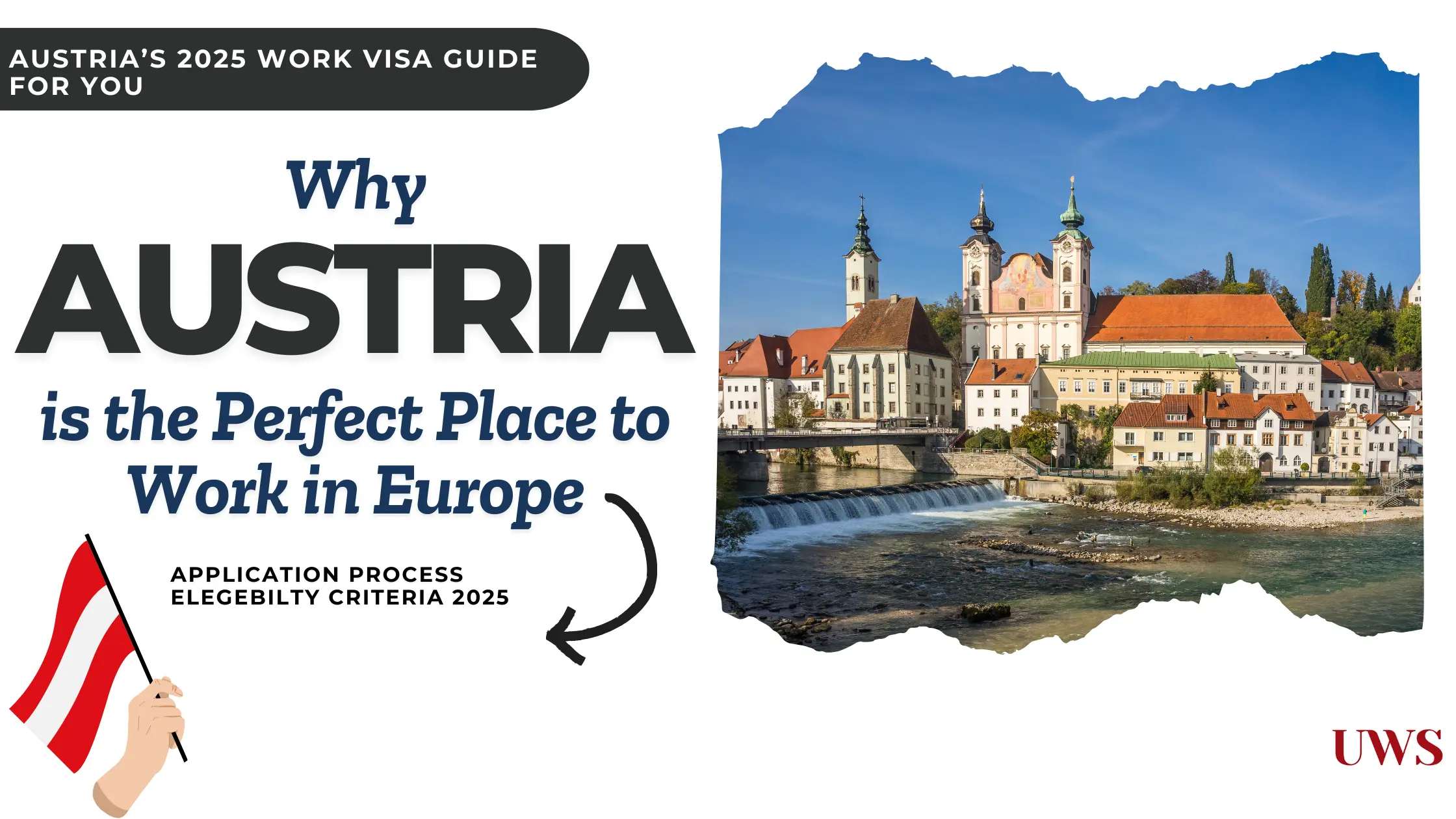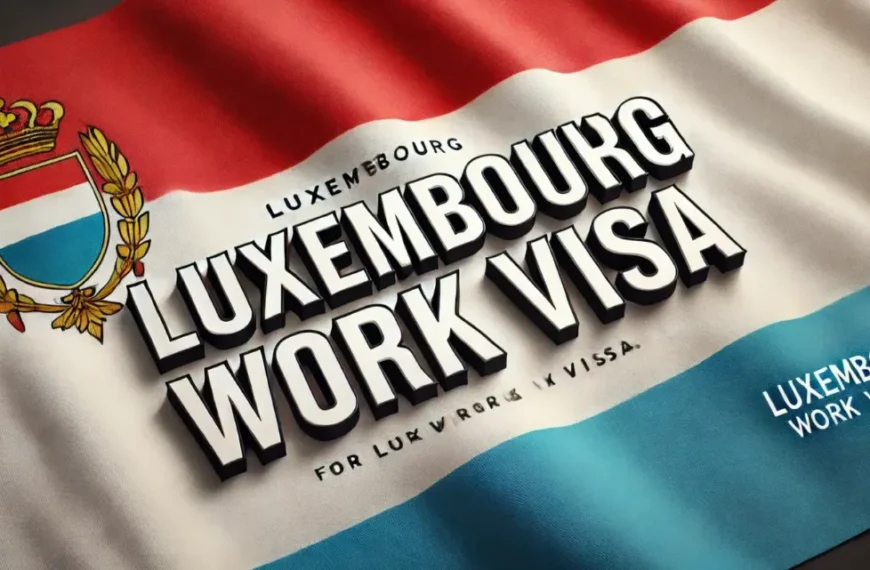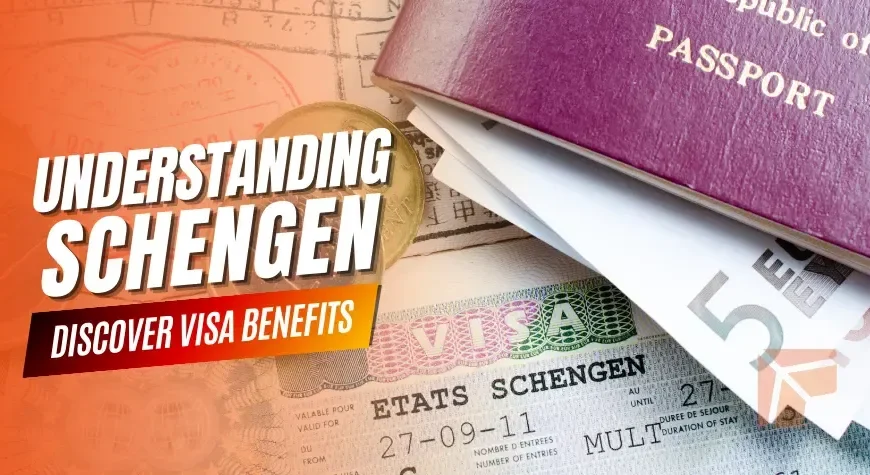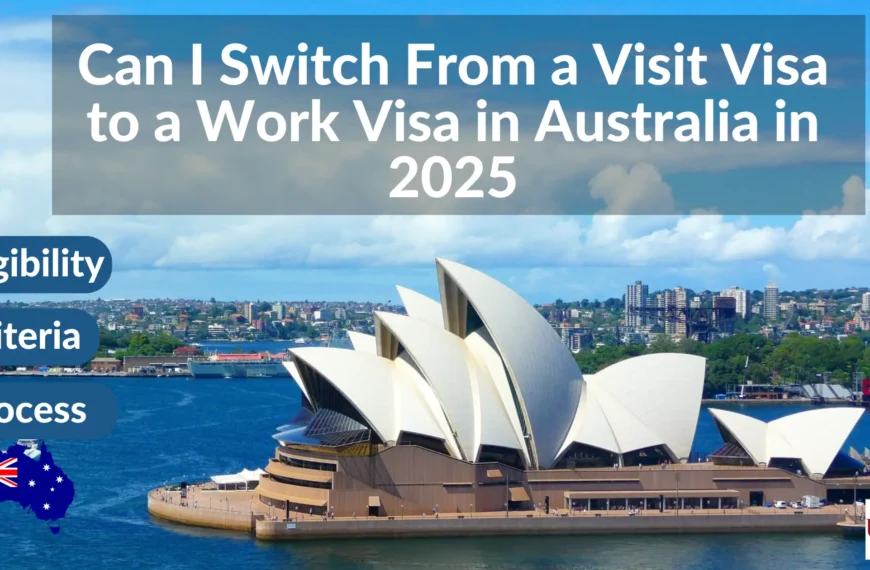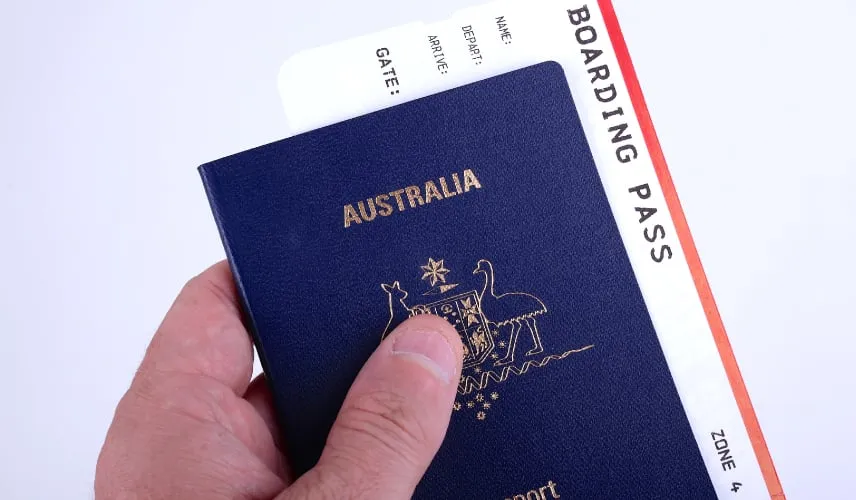Ah, Austria—a land famous for its stunning alpine landscapes, Mozart’s melodies, and the culinary wonder that is schnitzel. But did you know it’s also a top destination for ambitious professionals looking to work and live in Europe? With its robust economy, world-class work-life balance, and a knack for efficiency (ever seen a Viennese tram run late?), Austria is rolling out the red carpet for non-EU citizens in 2025. If you’ve been daydreaming about a European adventure beyond Instagram photos, Austria might be your ticket.
- What Is Austria’s Red-White-Red Card?
- Who Can Apply? Eligibility Criteria Simplified
- Application Process: How to Get Started
- Why Austria Is the Perfect Place to Work in Europe | Work Visa Options in 2025
- Exploring the Job Seeker Visa Option
- EU Blue Card vs. Red-White-Red Card: Which One Is Right for You?
- Essential Documents You’ll Need
- Processing Times and Costs: What to Expect
- Tips to Increase Your Chances of Success
- Life in Austria: What Awaits You After Your Visa Approval
- Conclusion
What Is Austria’s Red-White-Red Card?
No, it’s not an invitation to a secret Viennese club. The Red-White-Red Card is Austria’s golden gateway for non-EU workers. This work permit allows you to live and work in Austria for up to two years with one specific employer. Think of it as a personalized invitation to Europe’s center stage, tailored to skilled professionals. From tech geniuses to healthcare heroes, this program has something for everyone.
Who Can Apply? Eligibility Criteria

Austria doesn’t just wave anyone through the gates; it has specific categories to ensure you’re the right fit. Here’s the scoop:
- Very Highly Qualified Workers: Think of this as Austria’s VIP pass. If you’re a superstar in your field, you can apply for a six-month Job Seeker Visa to hunt for a role. Scoring 70 points (based on qualifications, experience, and language skills) gets you through the velvet rope.
- Skilled Workers in Shortage Occupations: Got expertise in an in-demand trade? Austria needs you. From engineers to care workers, secure a job offer, and you’re golden.
- Other Key Workers: Meet the minimum salary requirements and bring your A-game skills, and Austria will gladly have you.
Also Check: How to Land a Job in the UK with Free Work Visa Sponsorship in 2025
Application Process: How to Get Started
Applying for the Red-White-Red Card is a bit like assembling IKEA furniture—seems daunting, but follow the instructions and you’ll be fine. Here’s your step-by-step guide:
- Get a Job Offer: It all starts with landing a role in Austria.
- Submit Your Application: Either you apply at the Austrian embassy in your country, or your employer can handle it locally.
- Gather Your Documents: You’ll need everything from a valid passport to proof of accommodation and health insurance. Think of it as a treasure hunt, but the treasure is your European career.
- Pay the Fees: The total cost is about €186—a small price for a life-changing opportunity.
- Wait for Processing: Expect around 7-8 weeks, so patience is key.
Why Austria Is the Perfect Place to Work in Europe | Work Visa Options in 2025
| Visa Type | Eligibility | Application Process | Processing Time | Fees |
| Red-White-Red Card | Highly qualified, skilled workers in shortage occupations, or key workers. | Job offer required. Apply via embassy or employer. | 7-8 weeks | Approx. €186 |
| EU Blue Card | University degree + high salary job offer. | Apply at embassy or employer; meet salary threshold. | Varies (avg. 4-8 weeks) | Approx. €120-€186 |
| Job Seeker Visa | Very highly qualified individuals achieving 70+ points on eligibility criteria. | Apply directly at Austrian embassy with proof of qualifications and finances. | Varies (apply early) | Approx. €150 |
Exploring the Job Seeker Visa Option
If the Red-White-Red Card feels like a big leap, the Job Seeker Visa is a fantastic starting point. This six-month visa lets you explore Austria while job hunting. To qualify, you’ll need to ace that 70-point system. Think of it as Austria giving you a trial run before making things official.
EU Blue Card vs. Red-White-Red Card: Which One Is Right for You?

For the indecisive among us, Austria also offers the EU Blue Card, aimed at highly skilled professionals with a university degree. This might be your path if you’ve got a solid job offer with a decent salary. The Red-White-Red Card, on the other hand, caters to broader categories of workers.
Essential Documents You’ll Need
Before you pack your bags, ensure you’ve got these in order:
- A valid passport (no expired ones, please—Austria’s too sharp for that).
- Recent photographs (smile optional).
- Proof of accommodation and health insurance.
- Evidence of sufficient financial means (they don’t want you couch-surfing indefinitely).
Processing Times and Costs: What to Expect
The bureaucratic gods typically take around 7-8 weeks to process your application. As for costs, €186 covers the application fee and personalization charges. It’s like investing in a passport to your European dream.
Tips to Increase Your Chances of Success
- Network Like a Pro: Austria loves referrals, so make LinkedIn your best friend.
- Tailor Your Application: Showcase how your skills match Austria’s needs.
- Brush Up on German: While not always mandatory, a bit of the local lingo can work wonders.
Life in Austria: What Awaits You After Your Visa Approval
Imagine waking up to scenic views, efficient public transport, and workdays that respect your personal life. Austria isn’t just about working; it’s about living. From vibrant cities like Vienna to tranquil alpine villages, there’s a rhythm for everyone. And yes, your weekends could involve skiing, hiking, or sipping on Viennese coffee—it’s all part of the package.
Conclusion
Austria in 2025 is more than a dream; it’s a tangible opportunity for skilled professionals worldwide. With pathways like the Red-White-Red Card and the Job Seeker Visa, the door to your European career is wide open. So, what are you waiting for? Dust off that CV, brush up your German (or just learn how to say “Danke”), and take the leap. Austria awaits!
Read More: https://www.bmeia.gv.at/en/travel-stay/entrance-and-residence-in-austria/visa
